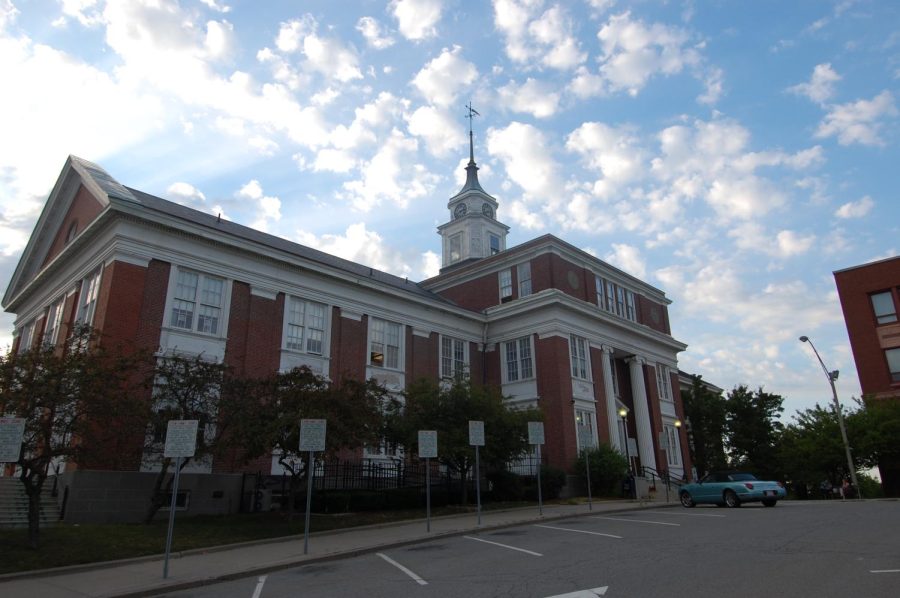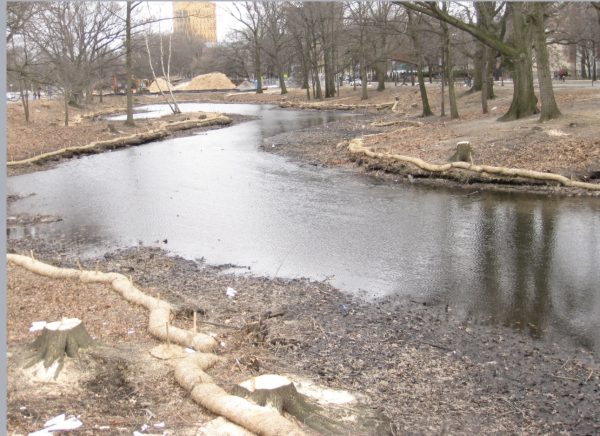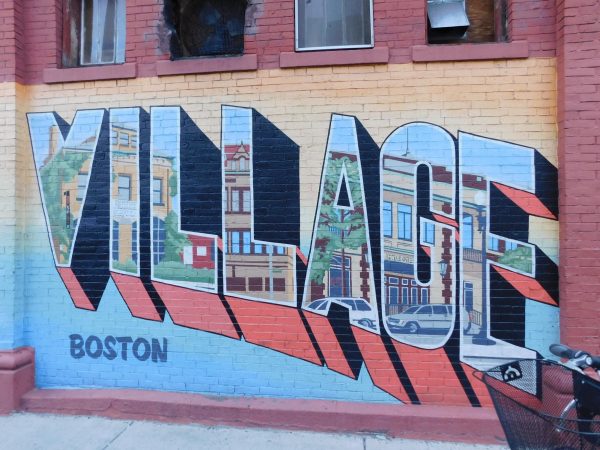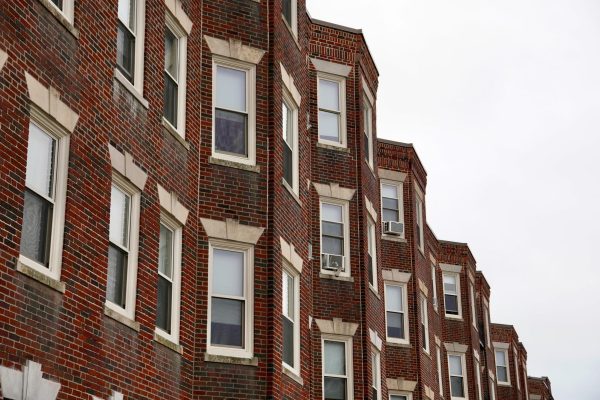Somerville officials are making plans to open the state’s first safe drug consumption site
“We have got to start changing the narrative…[substance use] really is a disease that can be managed and treated.”
When Kelli, 56, started volunteering at a needle exchange program operating out of a small church in Philadelphia, she became a part of what she described as a “sacred place for love and understanding.”
Needle exchange programs offer sanitary syringes to people who use drugs to prevent the spread of disease. The programs are a method of harm reduction – a term used to describe health initiatives that are aimed at reducing the negative consequences of drug use as opposed to promoting immediate abstinence. Kelli, who requested the omission of her last name for privacy reasons, is in long-term recovery herself.
“Someone in addiction is a very isolated, lonely, self-deprecating individual,” she said. “And the last thing they need is for someone to shame them or force anything they’re not ready to do on them.”
After 12 years using hard drugs, Kelli entered treatment following a near-death experience by overdose. Now, in addition to volunteering for needle exchange programs, Kelli advocates for another form of harm reduction: overdose prevention centers.
While needle exchange programs have been operating in the U.S. since the AIDS epidemic in the 1980s, overdose prevention centers are only now making headway. The centers offer a new approach to aiding people with a substance use disorder, and they’re coming to Massachusetts soon — with Somerville leading the way.
Overdose prevention centers, or safe consumption sites, are health care facilities where participants can bring illicit drugs to use in a sanitary environment and can receive medical attention in the case of an overdose. The centers are also gateways to other health care and social services such as mental health counseling and housing support. Although overdose prevention centers are not a new concept, their implementation in the U.S. is controversial and has yet to gain acceptance by policymakers due to controversy surrounding how best to help people with an addiction.
“There’s not always a clear path to recovery. It’s something that takes time, and it takes a lot of getting to a low and making a decision to move forward,” said Nick Acquadro, who previously worked as a substance use counselor in a methadone clinic in Woburn, Massachusetts. “Spaces that help understand that people will make mistakes and need space to grow — that’s where the harm reduction model is helpful.”
Currently, there are more than 100 overdose prevention centers globally in 11 countries, some of which have been in operation for decades. Notably, there have been no reported drug overdose deaths at any center in the world.
Research has shown that aside from preventing overdoses, the centers can increase public safety. In a study conducted at an unsanctioned overdose prevention center in California, 90% of people using the facility reported that they would otherwise be using in a public space like a park or public restroom.
Additionally, the centers have been shown to save money by preventing diseases like HIV, reducing emergency department visits and other avoidable medical costs. For example, a cost-benefit analysis of a potential site in Baltimore found that the city could save $7.8 million annually.
But the U.S. has been slow to adopt overdose prevention centers, even though the Department of Health and Human Services has supported harm reduction initiatives like needle exchange programs and fentanyl test strips, which are strips of paper that can detect the deadly drug. Under the federal “crack house” statute, it is illegal to maintain drug-involved properties.
“The United States doesn’t view this as a health care problem. This is viewed as a legal problem, and that’s a policy and cultural choice,” said Dr. Miriam Harris, an addiction expert at the Boston Medical Center. “It’s really not consistent with what we know about drug use and addiction.”
Paving a new road
The city of Somerville is pioneering a policy change in Massachusetts with plans to open an overdose prevention center in either East Somerville or Davis Square — what will be the first of such centers in the state.
Over the summer, the city finalized a report that laid out the plans for the center, created in partnership with Fenway Health. The site could begin as a modular unit in a city-owned parking lot, but the long-term goal is a more permanent location in a building space, said Matthew Mitchell, the prevention services manager for the city.
“We want to legitimize the medical intervention that it is,” he said.
The city is currently in the planning stage. This involves interdepartmental meetings, community engagement with potential locations and a heavy focus on education, which Mitchell believes is a key element in getting residents on board.
“We have got to start changing the narrative about what an overdose, or what substance use looks like, and why it’s not a moral failing,” he said. “It really is a disease that can be managed and can be treated.”
According to the Massachusetts Department of Public Health data, opioid-related overdose deaths have been on a steady rise in the state over the past two decades — increasing by 9% in 2021 to an estimated 2,290 lives lost that year.
Since 2015, 108 residents have died from an overdose in Somerville. Matt McLaughlin, president of the Somerville City Council, grew up in the city and said his desire for drug reform is what drove him into politics.
“A lot of people I grew up with aren’t alive anymore because they got into opioid abuse,” McLaughlin said. “It has impacted our community so dramatically.”
Current harm reduction services in Somerville include community education programs and distributing Narcan and fentanyl test strips, but McLaughlin thinks overdose prevention centers promise more.
“It’s about keeping people alive, and that should be our number one priority when we’re dealing with this disease: keeping people alive until they’re able to seek help and get off the substance,” he said. “But if they’re dead, there’s no recovery.”
Most of the residents in Somerville support opening the centers. In a survey of 615 residents conducted by the city, only 19% reported they would have concerns, mostly with safety and impact on crime, while a majority 56% reported they would have no concerns with an overdose prevention center in their neighborhood.
Massachusetts Gov. Maura Healey has also voiced support for harm reduction models in the past. It may not be long before Somerville is joined by other communities in Massachusetts with support from the state.
However, safe drug consumption sites still face hurdles at the federal level. In 2021, the U.S. Court of Appeals for the 3rd Circuit ruled it was a federal crime for the nonprofit Safehouse to open an overdose prevention center in Philadelphia, reasoning that “though the opioid crisis may call for innovative solutions, local innovations may not break federal law.”
Andrew Lelling, the former U.S. Attorney for Massachusetts, thinks that overdose prevention centers facilitate addiction more than rehabilitation.
Because Lelling finds that most supervised injection sites do not pressure those with substance use disorder into treatment, he would much rather see the money go into free rehab and better education.
“All the people in favor of supervised injection sites, all of them are acting in good faith. They want the same thing I would want. They want to mitigate the drug problem,” Lelling said. “We just sort of differ on how you get there.”
Opposition to overdose prevention centers is playing out all around the country. In August, California Gov. Gavin Newsom vetoed legislation that would have permitted the opening of overdose prevention centers in Los Angeles, San Francisco and Oakland. Over the summer, the Massachusetts legislature tabled bills that would have created a 10-year pilot program for overdose prevention centers.
“There’s this fear around safe consumption sites — and it’s not a fear that I dismiss — because people don’t want to live in a permissive atmosphere that is going to attract drug use,” McLaughlin said. “But what I point out to them is that the problems they fear already exist right now. And they exist everywhere all around us.”
Some states have been successful in pushing forward new legislature. Rhode Island became the first state to legalize overdose prevention centers in 2021.
Then, in November 2021, New York City became the first city in the U.S. to open overdose prevention centers – which was done without state or federal approval. Located in the neighborhoods of East Harlem and Washington Heights, the sites are operated by the nonprofit OnPoint NYC and funded privately. Nearly one year later, OnPoint NYC reported that the centers have intervened in 603 overdoses.
“They’re showing how incredibly beautiful and wonderful taking a public health approach to substance use and addiction can be for a community. And how healing, and how hopeful it can be,” said Harris, the Boston Medical Center addiction expert.
McLaughlin acknowledges that while these sites are not the sole answer to overdose prevention, it definitely has proven to create impact.
“This isn’t the thing that’s going to solve all our problems. It’s one way we can tackle the problem.” McLaughlin said. “Sometimes it takes a few cities to lead the way and show people this isn’t something to be afraid of.”
Looking ahead
Kelli had the opportunity to visit one of the overdose prevention centers in New York City. And it filled her with joy.
“I started to cry. That’s just the kind of place it is,” she said. “People are actually smiling and laughing in there because they finally have that relief that someone is not judging them or treating them like a piece of shit.”
Kelli was born and raised in the diverse, working-class community of South Philly, where she played with the neighborhood children and could cut through her backyard to get to her grandma’s house. But this beloved home and neighborhood is also where Kelli was introduced to substances and alcohol. At a young age, she developed an addiction, and at 39, she began using heroin and fentanyl.
Kelli said she would have used an overdose prevention center if she had access to one, and she thinks the sites offer an overlooked service: a place for participants to connect with others and to “build trusting relationships and be safe and feel as though they can breathe.” Acceptance is required not just of the centers, but of the people in recovery and whatever pathway their recovery will take.
“We are more alike than different. This can happen to anybody. It doesn’t discriminate,” she said. “We’re not bad people. We’re sick people trying to get well.”







